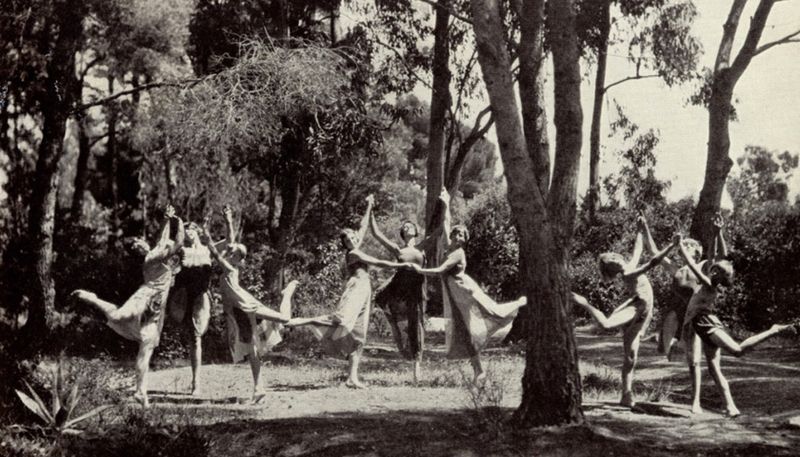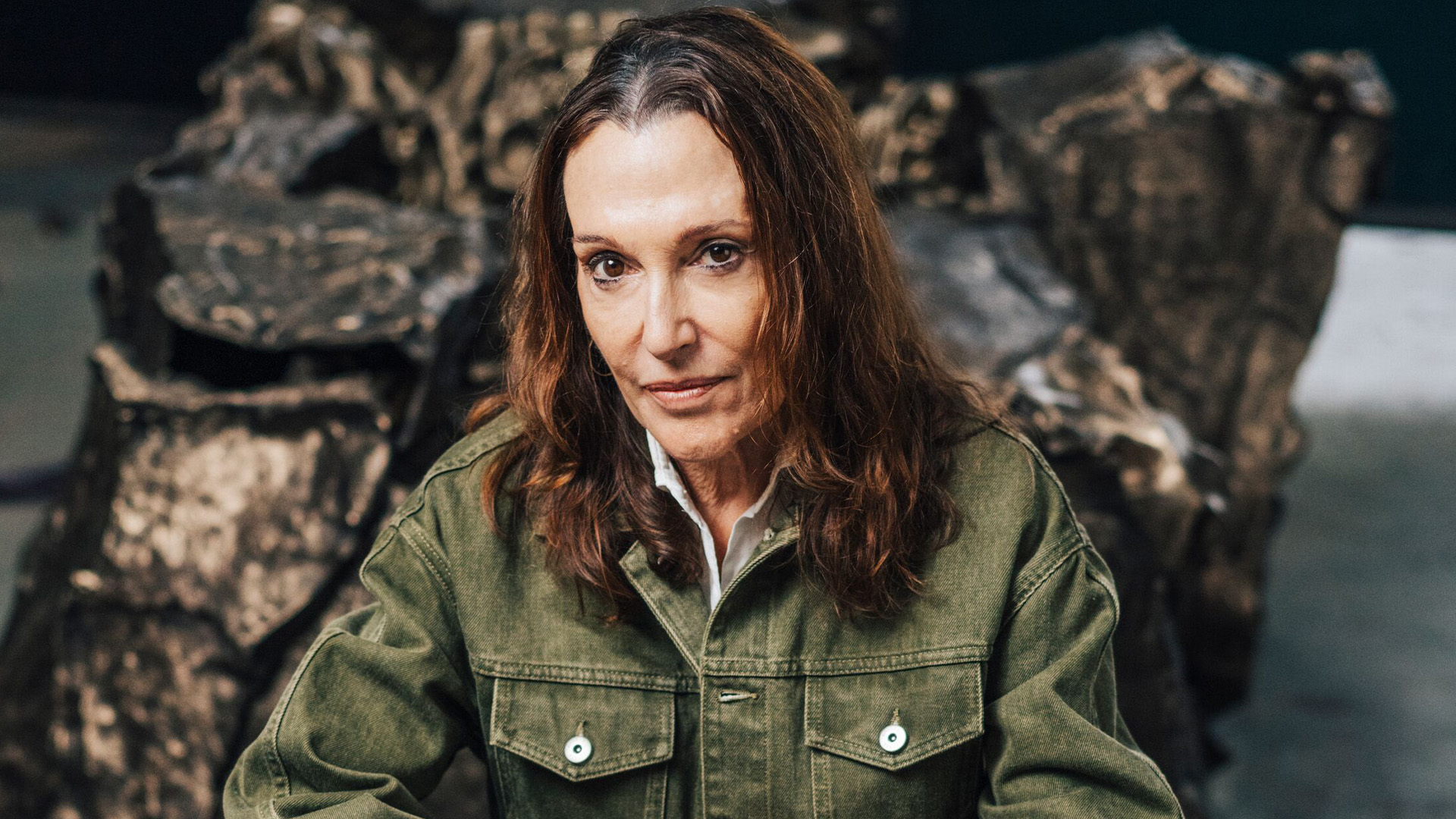Susan Philipsz: As Many As Will

© 2014 Fred Daniels Estate
Susan Philipsz: As Many As Will
This resource has been produced to accompany the exhibition, ‘Susan Philipsz: As Many As Will’, at Hauser & Wirth Somerset.
About Susan Philipsz
Born in 1965 in Glasgow, Susan Philipsz currently lives and works in Berlin. She studied sculpture at Duncan of Jordanstone College and at the University of Ulster. Susan Philipsz won the Turner Prize in 2010.
What is her work like?
Susan Philipsz describes her work as song sculptures. She mainly uses her own voice, an untrained singing voice with a Scottish accent. So instead of using visible materials to make artwork she uses sound as her material. In this case there may be nothing in particular to see but by listening to the sounds that she creates you will become more aware of the space you are in.
What are her main themes?
Susan Philipsz is interested in psychology and how a sound can trigger memories. Space is also important to her work, by using sound we are encouraged to see the space within which we hear the sound. In ‘As Many as Will’, Susan Philipsz has responded to the architecture of the Threshing Barn which reminds her of a space for country dancing to take place, she often responds to architecture in this way, evoking memories of a sense of a place in the past.
How does she make her work?
Susan Philipsz focuses on sound itself and considers how it is composed. In this exhibition she has separated out the tones within the composition and plays them from different speakers. The speakers hang down from the barn rafters. This presentation of sound in repertory from various points in the space becomes more of a pattern. It could be an audio representation of the footwork required in country dancing.
What is the title of her work?
The title, ‘As Many As Will’ is a reference to John Playford’s guidebook of traditional dance steps, English Dancing Master, 1651. Susan has imagined the open space of the Threshing Barn and the Cloisters as a space cleared for traditional dancing. Her titles come from her research into specific places and specific periods in history.
What inspires her work?
Susan Philipsz attended a Catholic school and although she was not musically trained and cannot read or write music, she enjoyed group singing, and was in a church choir with her siblings. She uses her own voice because she is aware of how we respond to sounds, and how the familiarity of sounds can evoke powerful memories. Although she studied sculpture, it is the power of sound rather than three-dimensional forms that has inspired her.
What other artist’s work does it relate to?
Dada was an avant-garde movement that developed in Switzerland in 1914; it was concerned with destroying traditional ideas about art and politics. Dadaist art involved poetry, performance and satirical gestures as well as visual art. Hans Arp belonged to this movement. In a recent show of his worked a recording of his poetry was played in the background, see more here.
When the highly respected avant-gardist John Cage died in 1992, he was already the subject of interviews and discussions of his contribution to music, music theory, and performance practice. However, Cage never thought of himself as only a composer; he was a poet, a visual artist, a philosophical thinker, and an important cultural critic. See his website here.

Installation view, 'Susan Philipsz As Many As Will', Hauser & Wirth Somerset, England, 2015. Photo: Aaron Schuman
Glossary Sound Art
Sound Art describes a creative practice where sound is used as the medium. In the past, movements such as Dada and Fluxus experimented with sound, it can be seen within conceptual, minimal and site-specific art.
Repertory
The performance of various plays, operas, or ballets by a company or performer at regular short intervals.
Installation
Mixed-media constructions or assemblages usually designed for a specific place and for a temporary period of time. Another artist to consider: Phyllida Barlow.
Immersive art
When you enter the environment you are immediately transported to another place and time. You forget about the world around you and find yourself completely immersed in the present moment. Some of Pipilotti Rist’s film screenings and installations are also immersive, see more here.
Dada
Dada was an avant-garde movement that developed in Switzerland in 1914, it was concerned with destroying traditional ideas about art and politics. Dadaist art involved poetry, performance and satirical gestures as well as visual art.
Fluxus
Fluxus is the name given to an international network of artists, composers and designers noted for blending different artistic media and disciplines in the 1960s. They have been active in Neo-Dada noise music and visual art as well as literature, urban planning, architecture, and design. Fluxus is sometimes described as intermedia.
Minimalism
Minimalism is an art movement that developed in New York in the early 1960s. Many artists began to create objects, which often blurred the boundaries between painting and sculpture, and started to employ industrial materials in order to be interpreted as neutral rather than expressive. A contemporary artist who used some minimalist approaches is Takesada Matsutani.
Site-specific
Refers to a work of art designed specifically for a particular location and that has an interrelationship with the location, consider the architectural environments of Dan Graham.
Suggested Activities During Your Visit
Note: You will need to bring pencils and a sketchbook.
Activity 1
Before you enter the gallery get into pairs. One person is blindfolded and the other person must guide them into the gallery, find a suitable position and encourage the blindfolded person to describe what they think is in the gallery. Discuss what you have found out.
Activity 2
Susan Philipsz describes how she wants her work to define a space and trigger a memory. What memories does this piece evoke in you?
Activity 3
Imagine a scene from the sound that you can hear and produce a sketch of it.
Practical Activity Prompts and Ideas for Discussion Following your Visit
Key Stage 1, 2 and 3
Produce a sound collector. Use a recording device to collect sounds that represent a sense of place. The place could be your home, your school, or your favourite holiday. What sounds do you need to make you remember that place when you are not there? Your sound collector could be a dictaphone, or some electronic recording device. Are you recording ‘real’ sounds e.g. cars, birds singing, voices etc. or are you making the sounds using instruments, everyday objects e.g. a tap running or your own voice making noises. A suggested poem to work with:
The Sound Collector
A stranger called this morning Dressed all in black and grey Put every sound into a bag And carried them away The whistling of the kettle The turning of the lock The purring of the kitten The ticking of the clock The popping of the toaster The crunching of the flakes When you spread the marmalade The scraping noise it makes The hissing of the frying pan The ticking of the grill The bubbling of the bathtub As it starts to fill The drumming of the raindrops On the windowpane When you do the washing-up The gurgle of the drain The crying of the baby The squeaking of the chair The swishing of the curtain The creaking of the stair A stranger called this morning He didn’t leave his name Left us only silence Life will never be the same From All the Best – The Selected Poems of Roger McGough
Key Stage 4 and beyond
If you could choose a soundtrack for a specific place where and what would it be? Susan Philipsz says that if she had a good singing voice she would not make work using her voice. Consider all forms of art that you have experienced, what do you think makes good art? What is sound art? Do you think it is a valid art form, discuss your thoughts.
Supplementary Research
Soundworks Creative research into sound art practice Everyday Listening Susan Philipsz at bortolozzi.com The Guardian article Susan Philipsz at artangels.org.uk
Resources
1 / 10









